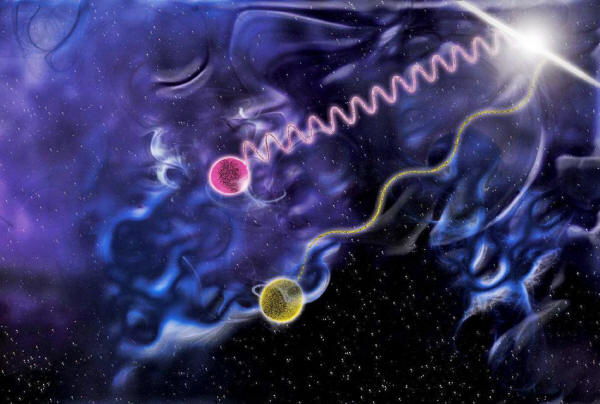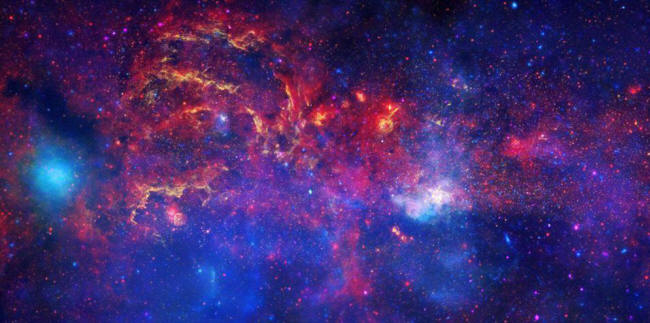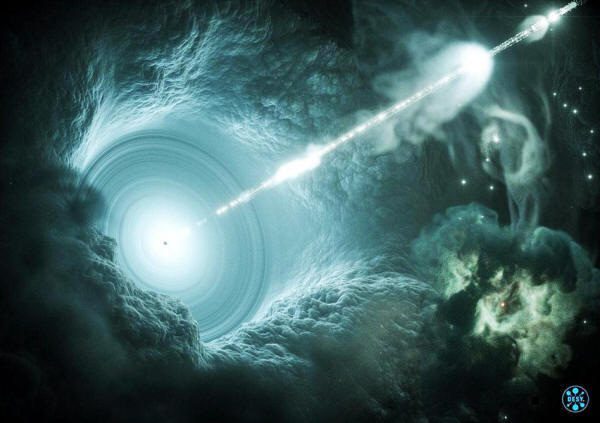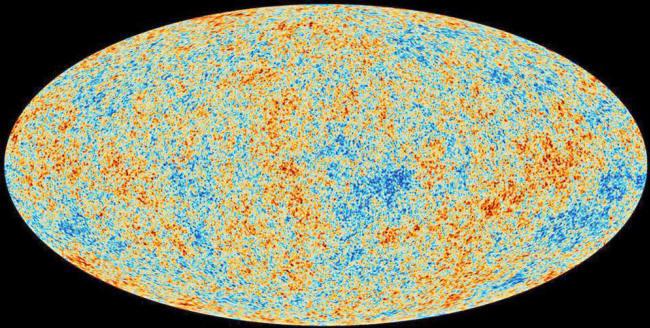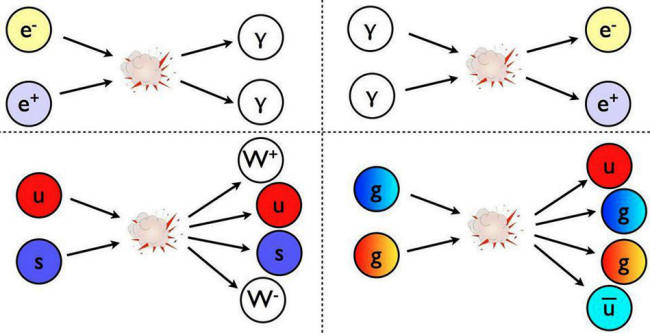|
from Medium Website
All massless particles travel at the speed of light, including the photon, gluon and gravitational waves, which carry the electromagnetic, strong nuclear and gravitational interactions, respectively. Particles with mass must always travel at speeds below the speed of light, and there's an even more restrictive cutoff in our Universe. (NASA/Sonoma State University/Aurore Simonnet)
than the speed of light in a vacuum. But particles in our Universe can't even go that fast.
As Albert Einstein first realized, everyone looking at a light ray sees that it appears to move at the same speed, regardless of whether it's moving towards you or away from you.
No matter how fast you travel or in what direction, all light always moves at the same speed, and this is true for all observers at all times.
Moreover, anything that's made of matter can only approach, but never reach, the speed of light. If you don't have mass, you must move at the speed of light:
But practically, in our Universe, there's an even more restrictive speed limit for matter, and it's lower than the speed of light.
Here's the scientific story of the real cosmic speed limit.
always appears to move at the same speed, the speed of light, regardless of the observer's velocity.
(pixabay
user Melmak)
Only in the absence of particles, fields, or a medium to travel through can we achieve this ultimate cosmic speed.
Even at that, it's only
the truly massless particles and waves that can achieve this speed.
This includes photons, gluons, and gravitational waves, but not
anything else we know of.
As a result, they can approach, but never reach, the speed of light in a vacuum.
No matter how much energy you put into them, the speed of light, even in a vacuum, will forever be unattainable.
appears to depict an ultra-relativistic motion through space, extremely close to the speed of light. But under the laws of relativity, you can never reach, much less exceed, the speed of light if you're made of matter.
(Jedimentat44 / flickr)
Even in the deepest abyss of intergalactic space, there are three things you absolutely cannot get rid of.
A multiwavelength view of the galactic center shows stars, gas, radiation and black holes, among other sources. But the light coming from all of these sources, from gamma rays to visible to radio light, can only indicate what our instruments are sensitive enough to detect from 25,000+ light years away.
(NASA/ESA/SSC/CXC/STScI)
Even though they're the
lowest-energy things, the CMB photons are the most numerous and
evenly-distributed particles of all. No matter how you're generated
or how much energy you have, it's not really possible to avoid
interacting with this 13.8 billion year old radiation.
That means we think we'll find them where energies are highest and fields are strongest: in the vicinity of collapsed objects like neutron stars and black holes.
a blazar is accelerating protons that produce pions, which produce neutrinos and gamma rays.
(IceCube/NASA)
The extremely strong fields are generated by charged particles, either on the surface of a neutron star or in the accretion disk around a black hole, that move close to the speed of light.
Moving charged particles
generate magnetic fields, and as particles move through these
fields, they accelerate.
The supermassive black hole at the center of the accretion disk sends a narrow high-energy jet of matter into space, perpendicular to the disc. A blazar about 4 billion light years away is the origin of many of the highest-energy cosmic rays and neutrinos.
(DESY,
Science Communication Lab)
The highest-energy cosmic rays have approximately 36 million times the energy of the fastest protons ever created at the Large Hadron Collider.
Assuming that these
cosmic rays are also made of protons gives a speed of
299,792,457.99999999999992 m/s, which is extremely close to, but
still below, the speed of light in a vacuum.
permeates the entire Universe. As a particle flies through space, it is constantly being bombarded by CMB photons. If the energy conditions are right, even the collision of a low-energy photon like this has an opportunity to create new particles.
(ESA/Planck
Collaboration)
In particular, the CMB will have its photons collide and interact with these particles as they travel through the Universe.
No matter how high the
energy is of the particle you made, it has to pass through the
radiation bath that's left over from
the Big Bang in order to reach you.
Even though that's a tiny number, the cosmic rays hitting it can be incredibly energetic.
Every time a high-energy charged particle interacts with a photon, it has the same possibility that all interacting particles have:
they have the opportunity to produce additional particle-antiparticle pairs, or new particles as the laws of quantum physics allow. Einstein's E = mc˛ is indiscriminate this way.
(E.
Siegel / Beyond The Galaxy)
When that interaction
occurs, there will be enough energy to produce a neutral
pion, which steals energy away from
the original cosmic ray.
There's even more braking (Bremsstrahlung) radiation that arises from interactions with any particles in the interstellar/intergalactic medium.
Even lower-energy particles are subject to it, and radiate energy away in droves as electron/positron pairs (and other particles) are produced.
produced by high-energy astrophysics sources can reach Earth's surface. When a cosmic ray collides with a particle in Earth's atmosphere, it produces a shower of particles that we can detect with arrays on the ground. If these particles are created beyond the local group, they should obey the GZK cutoff.
(ASPERA
collaboration / AStroParticle ERAnet)
Not just the speed of light, but a little bit lower, thanks to the leftover glow from the Big Bang and the particles in the intergalactic medium.
If we see anything that's at a higher energy, then it either means:
The few particles we've seen that break the GZK barrier are indeed in excess of 5×1019 eV, in terms of energy, but do not exceed 3×1021 eV, which would be the corresponding energy value for an iron nucleus.
Since many of the highest-energy cosmic rays have been confirmed to be heavy nuclei, rather than individual protons, this reigns as the most likely explanation for the extreme ultra-high-energy cosmic rays.
As we go to higher and higher energies, we find fewer and fewer cosmic rays. We expected a complete cutoff at 5 x 1019 eV, but see particles coming in with up to 10 times that energy.
(Hillas
2006 / University of Hamburg)
Instead, it's a value that's very slightly lower, dictated by the amount of energy in the leftover glow from the Big Bang. As the Universe continues to expand and cool, that speed limit will slowly rise over cosmic timescales, getting ever-closer to the speed of light.
But remember, as you travel through the Universe, if you go too fast, even the radiation left over from the Big Bang can fry you.
So long as you're made of
matter, there's a cosmic speed limit that you simply cannot
overcome...
|


